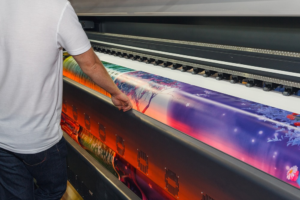Textile industry has been heavily dependant on water for processing purposes. The industry was always brought under the radar owing to its exclusive usage of water for varied dyeing and processing work. However, the industry has grown more conscious about the approach at present and are trying to cut down on the water usage considerably to save the depletion of the environment and to stay responsible in the industry’s feat.

How is dry dyeing revolutionizing the approach?
The dry dyeing method, a pioneering work of a Dutch company in textile dyeing, does not make use of water at all. If that sounds unbelievable, let’s break it down a little more for you to understand this revolutionary approach.
- Super critical is a state where matter can be expanded into a liquid or heavily pressurized and converted to gas.
- When carbon dioxide is heated to over 31°C and pressurized to above 74 bar, the supercritical state is then achieved.
- Carbon dioxide’s liquid like densities proves to be beneficial for dissolving hydrophobic dyes and the gas like densities, have low viscosities and diffusion properties.
- The supercritical carbon dioxide technique is already being used in apparel dry cleaning, and has proved to be by far the best, most gentle, and the cleanest method to do so.
- The same technique is now used to make dry dyeing a reality.
Reasons why CO2 looks viable for the process
There is no one reason why carbon dioxide is the best fit for dry dyeing. Rather, a list of reasons makes CO2 viable for the processes. Here’s why? Carbon dioxide is readily available, is biodegradable, and does not release any form of volatile organic compounds. Moreover, it is non-toxic, non-flammable, and non-corrosive. These merits make it a very viable dyeing alternative. The biggest merit of using carbon dioxide is that it can be recovered, and reused again from the process of dyeing, making it a cost-effective option.
This method of waterless dyeing is also used for printing on garments. The water-based dyeing techniques involve drying the garment, once it has been coloured, while this new innovative technique eliminates this process altogether.
What’s the most important benefit of dry dyeing?
Dyeing with carbon dioxide delivers brilliant results in terms of dye levelness and shade development. The physical properties are also as good as the conventional dyeing methods. This kind of dyeing is done in equipment, where in the fabric is rolled and inserted in a high-pressure vessel filled with carbon dioxide and pressurized up to 250 bar. Removing excess dye is also done in the same vessel. The viscosity of dyes produced by this process is low. Water less dyeing when compared to conventional dyeing forms consumes very less energy, disposes less waste, and completes the dyeing process in approximately two to three hours. This makes it an environment friendly and sustainable alternative.
So, dry dyeing is not only innovative, but it also helps save a lot of water in the process. But this is just one innovation, it is time for the industry to innovate continuously and build more processes that can drive the environmental route to stop unnecessary degradation and wastages.


